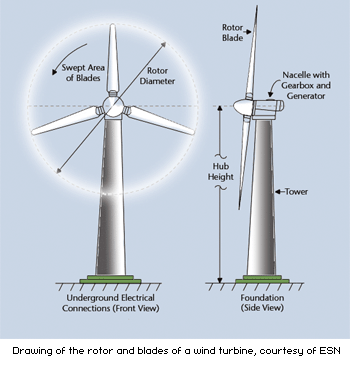A turbine blade is the individual component which makes up the turbine section of a gas turbine. The blades are responsible for extracting energy from the high temperature, high pressure gas produced by the combustor.
The high pressure turbine is connected by a single spool to the high pressure compressor , and the low pressure turbine is connected to the low pressure compressor by a second spool .
In a gas turbine engine, a single turbine section is made up of a disk or hub that holds many turbine blades.
The number of turbine stages varies in different types of engines, with high bypass ratio engines tending to have the most turbine stages.
The number of turbine stages can have a great effect on how the turbine blades are designed for each stage.
The high pressure turbine is exposed to the hottest, highest pressure, air, and the low pressure turbine is subjected to cooler, lower pressure air.
That difference in conditions leads the design of high pressure and low pressure turbine blades to be significantly different in material and cooling choices even though the aerodynamic and thermodynamic principles are the same.
All three of these factors can lead to blade failures, which can destroy the engine, and turbine blades are carefully designed to resist those conditions.
Further processing methods like hot isostatic pressing improved the alloys used for turbine blades and increased turbine blade performance.
Most turbine blades are manufactured by investment casting . This process involves making a precise negative die of the blade shape that is filled with wax to form the blade shape.
The blades are coated with an TBC they will have, and then cooling holes are machined as needed, creating a complete turbine blade.
Another strategy to improving turbine blades and increasing their operating temperature, aside from better materials, is to cool the blades.
Impingement cooling is often used on certain areas of a turbine blade, like the leading edge, with standard convection cooling used in the rest of the blade.
The second major type of cooling is film cooling . This type of cooling works by pumping cool air out of the blade through small holes in the blade. This air creates a thin layer of cool air on the surface of the blade, protecting it from the high temperature air.
A United State Air Force program in the early 1970s funded the development of a turbine blade that was both film and convection cooled, and that method has become common in modern turbine blades.
Transpiration cooling, the third major type of cooling, is similar to film cooling in that it creates a thin film of cooling air on the blade, but it is different in that air is "leaked" through a porous shell rather than injected through holes. This type of cooling is effective at high temperatures as it uniformly covers the entire blade with cool air.
The high pressure turbine is connected by a single spool to the high pressure compressor , and the low pressure turbine is connected to the low pressure compressor by a second spool .
In a gas turbine engine, a single turbine section is made up of a disk or hub that holds many turbine blades.
The number of turbine stages varies in different types of engines, with high bypass ratio engines tending to have the most turbine stages.
The number of turbine stages can have a great effect on how the turbine blades are designed for each stage.
The high pressure turbine is exposed to the hottest, highest pressure, air, and the low pressure turbine is subjected to cooler, lower pressure air.
That difference in conditions leads the design of high pressure and low pressure turbine blades to be significantly different in material and cooling choices even though the aerodynamic and thermodynamic principles are the same.
All three of these factors can lead to blade failures, which can destroy the engine, and turbine blades are carefully designed to resist those conditions.
Further processing methods like hot isostatic pressing improved the alloys used for turbine blades and increased turbine blade performance.
Most turbine blades are manufactured by investment casting . This process involves making a precise negative die of the blade shape that is filled with wax to form the blade shape.
The blades are coated with an TBC they will have, and then cooling holes are machined as needed, creating a complete turbine blade.
Another strategy to improving turbine blades and increasing their operating temperature, aside from better materials, is to cool the blades.
Impingement cooling is often used on certain areas of a turbine blade, like the leading edge, with standard convection cooling used in the rest of the blade.
The second major type of cooling is film cooling . This type of cooling works by pumping cool air out of the blade through small holes in the blade. This air creates a thin layer of cool air on the surface of the blade, protecting it from the high temperature air.
A United State Air Force program in the early 1970s funded the development of a turbine blade that was both film and convection cooled, and that method has become common in modern turbine blades.
Transpiration cooling, the third major type of cooling, is similar to film cooling in that it creates a thin film of cooling air on the blade, but it is different in that air is "leaked" through a porous shell rather than injected through holes. This type of cooling is effective at high temperatures as it uniformly covers the entire blade with cool air.



No comments:
Post a Comment